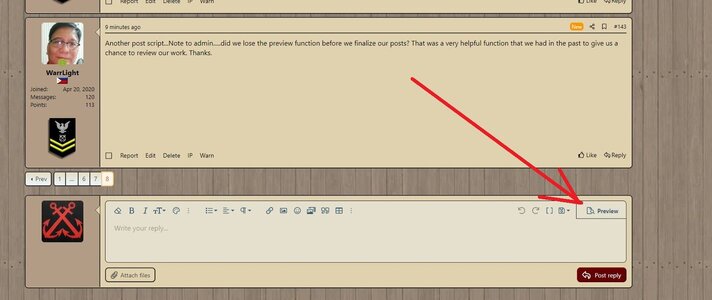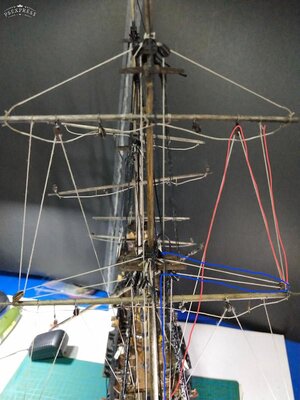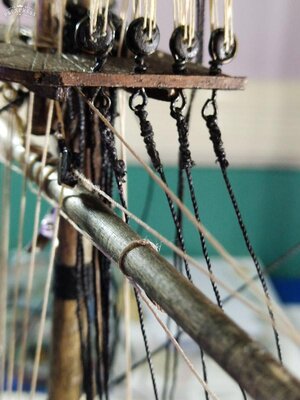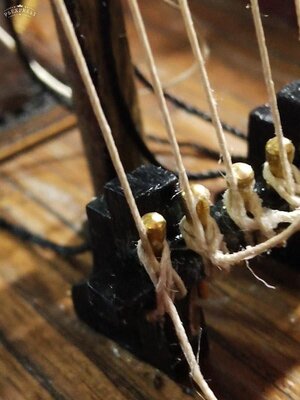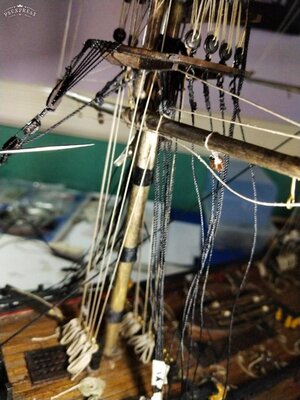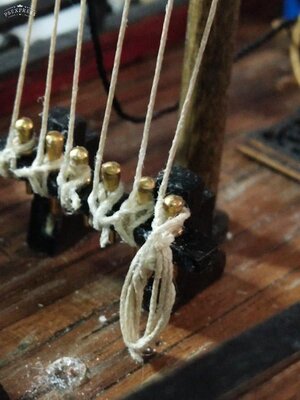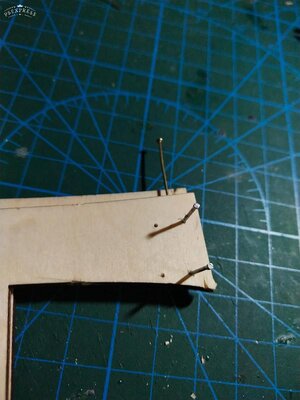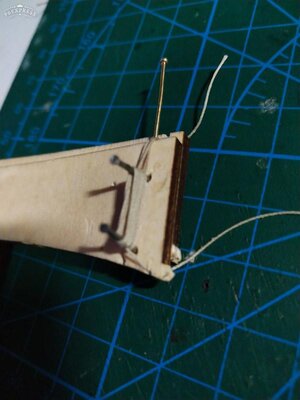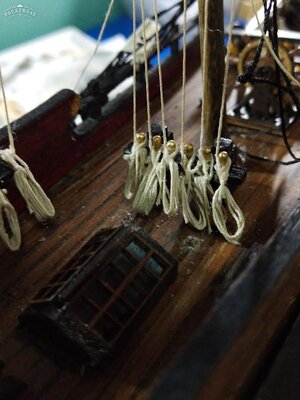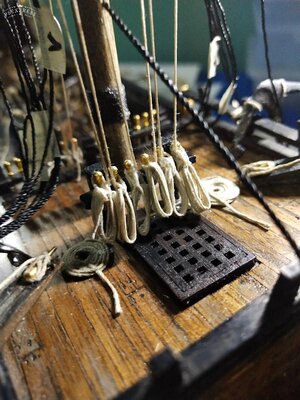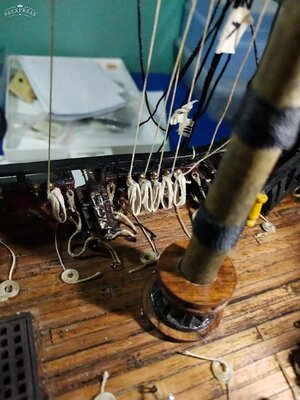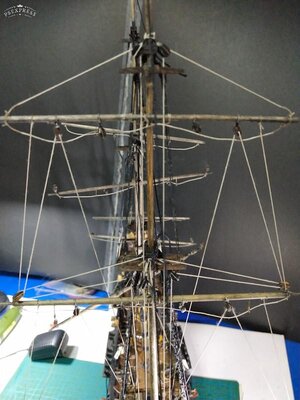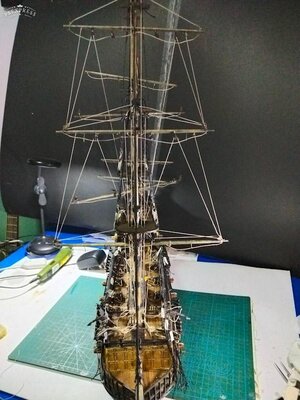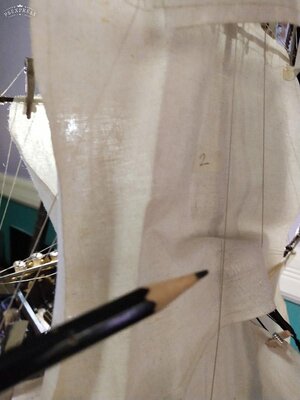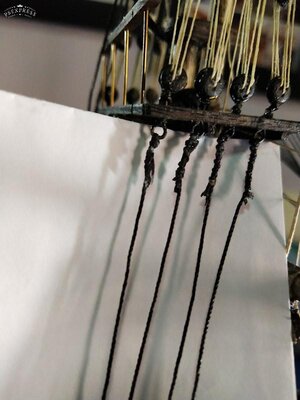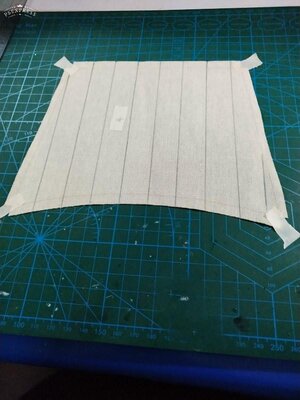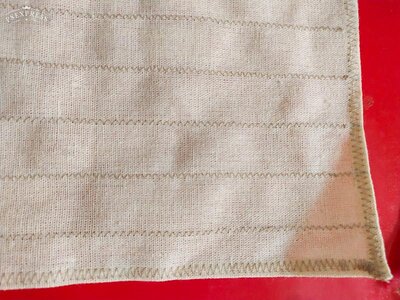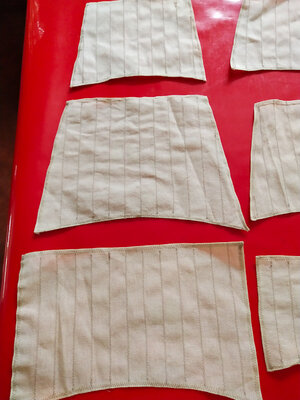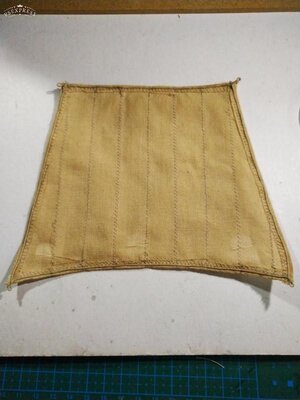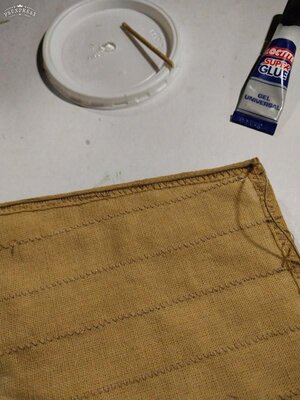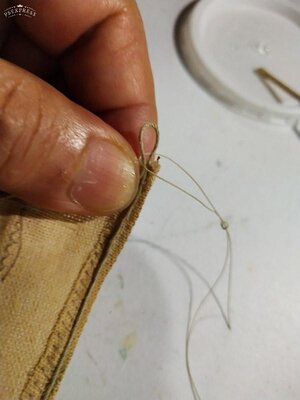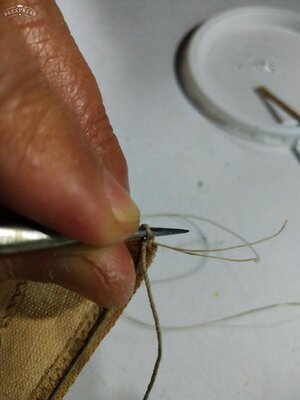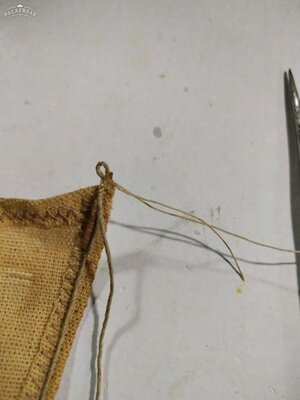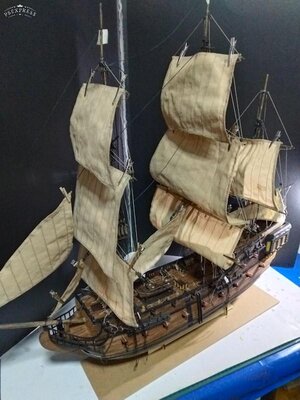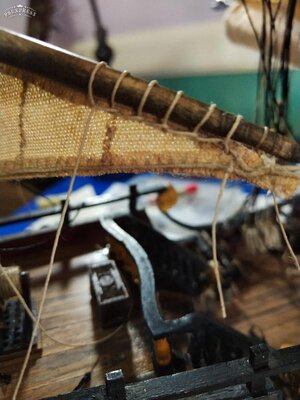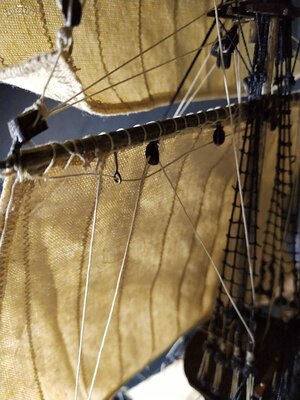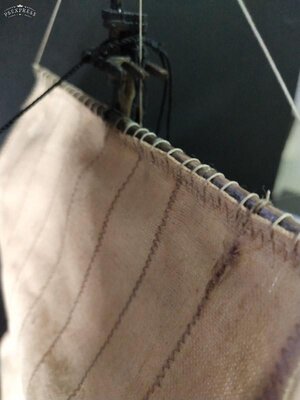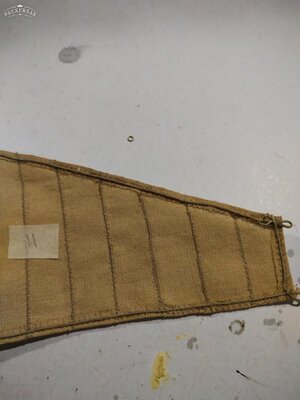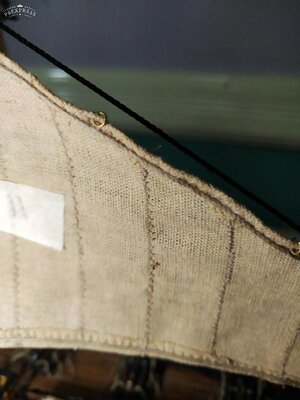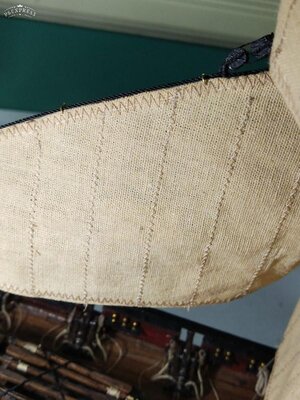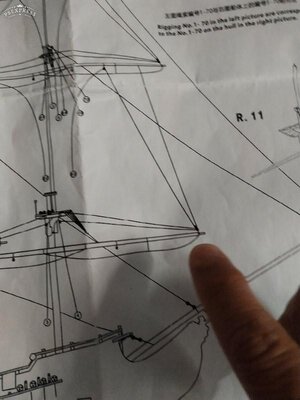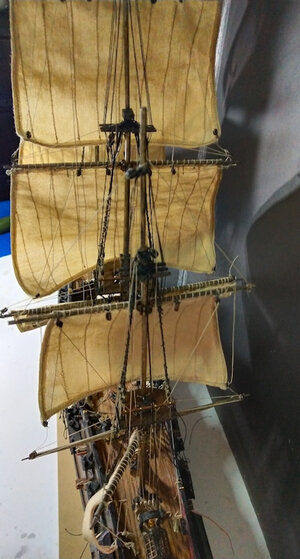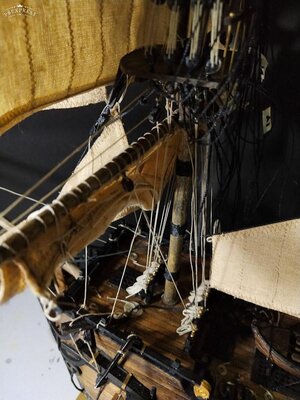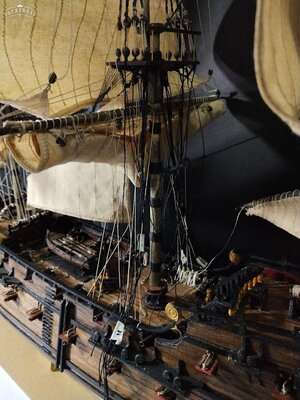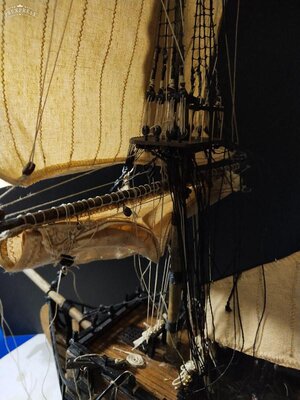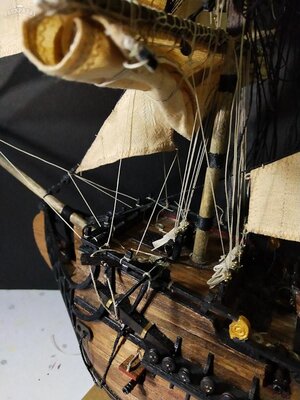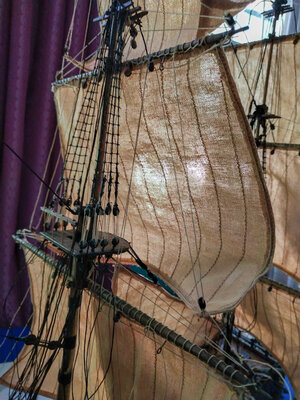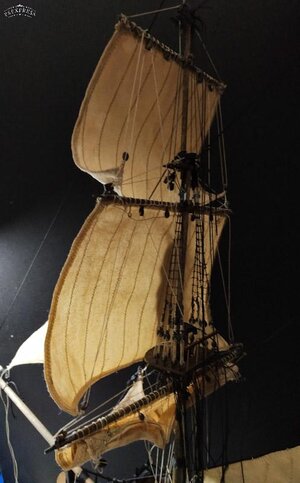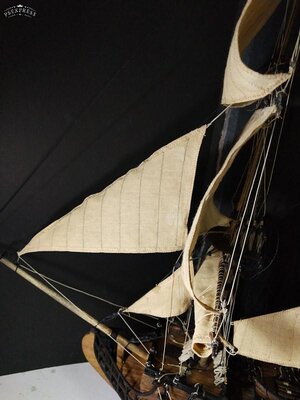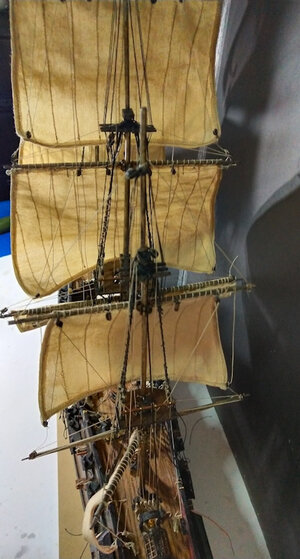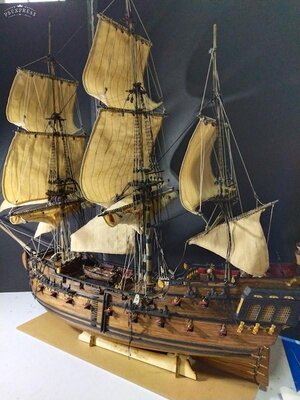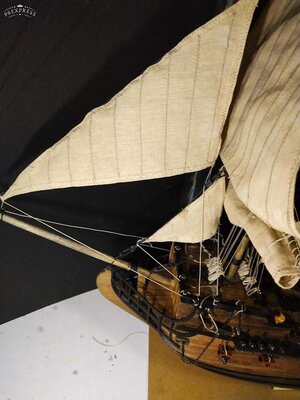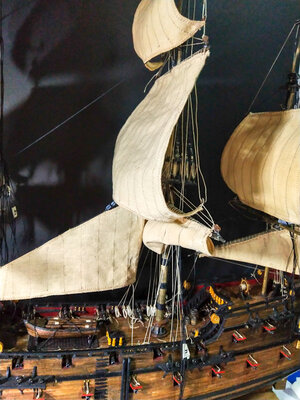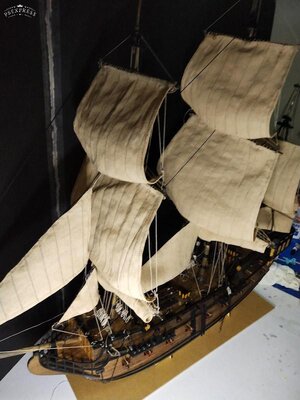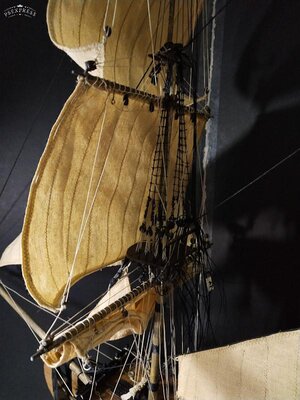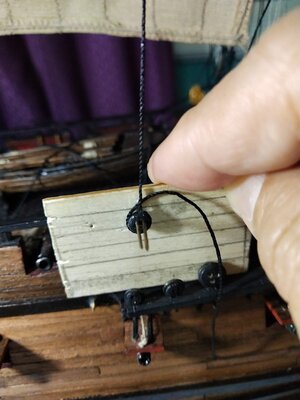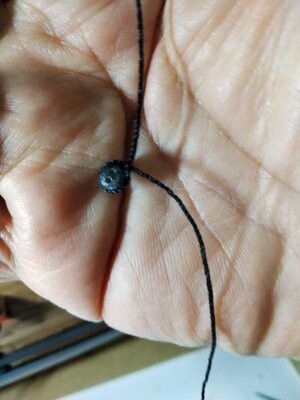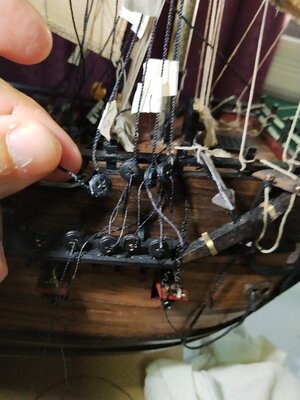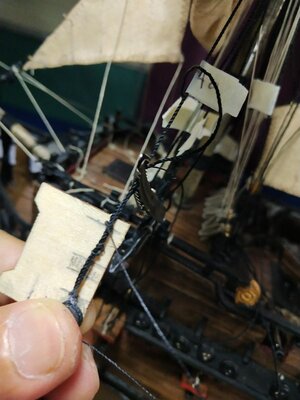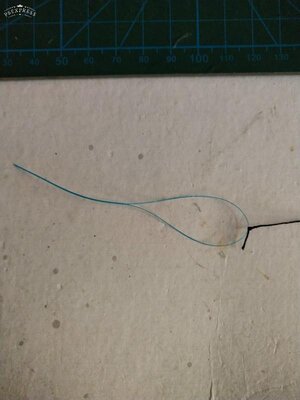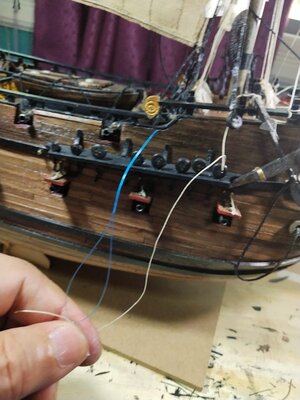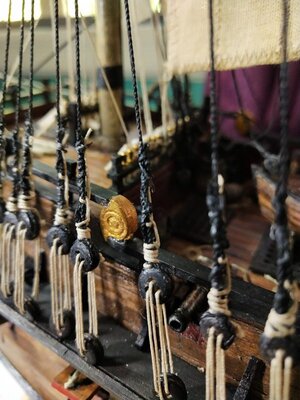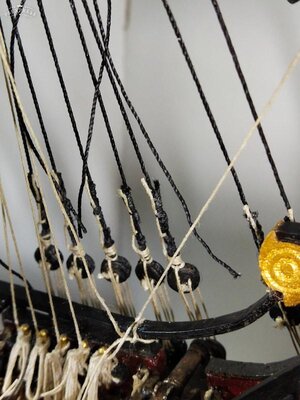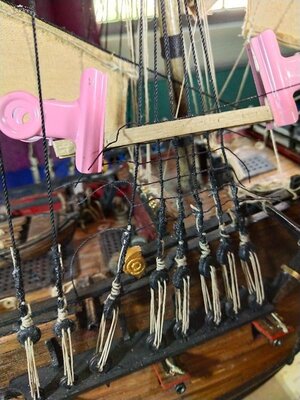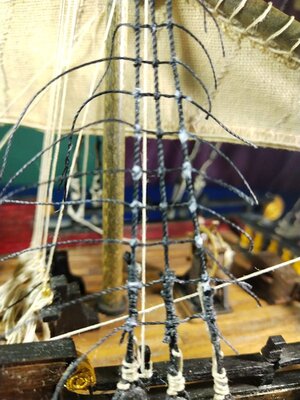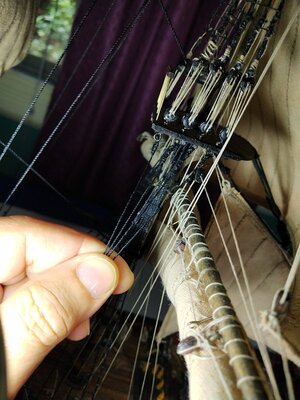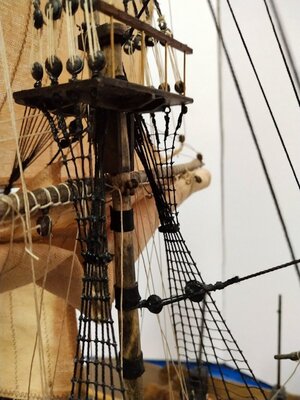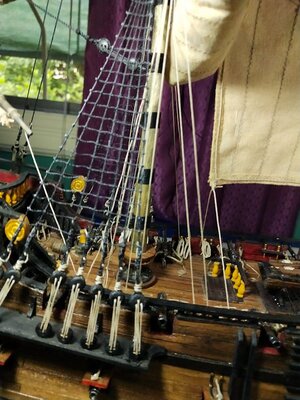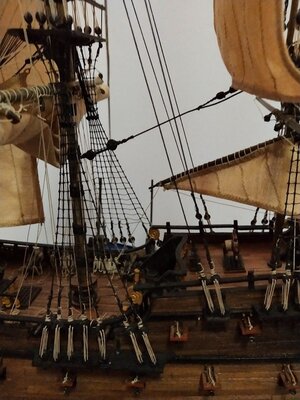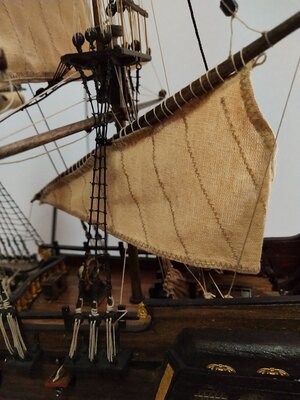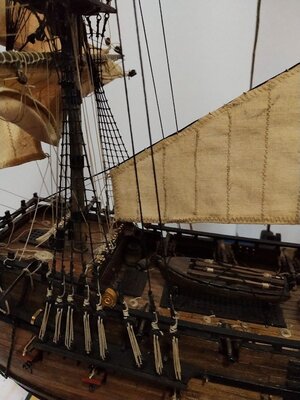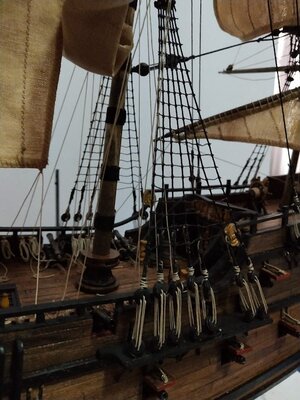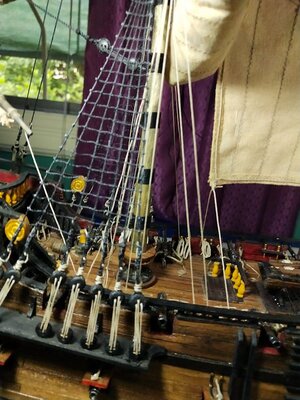- Joined
- Apr 20, 2020
- Messages
- 313
- Points
- 278

Getting ready to step my masts onto the deck. So far, this is what i have done so far prior to stepping: a) I rigged the lower shrouds (i.e.attached to the mastheads). I am just letting these hang down for now waiting for later attaching to the deadeyes on the channels. b) I rigged all upper shrouds to the mast heads. c) I attached the topmast shrouds to the deadeyes on the mast tops using lanyards d) I put the ratlines on the topmast shrouds e) I attached the topgallant and royal futtock shrouds to the shrouds below them f) I attached all the blocks and deadeyes onto the masts g) I attached all the blocks, stirrups and footropes on the yards h) I mounted the yards to the masts using truss pendants, parrels and slings.
Now, I am ready to step my masts. In order to gain a bit more strength to the masts, I drilled and glued some cutoff nails down into the bulkhead where the masts sit (this is necessary especially for the main mast because the base is only a few mm deep).
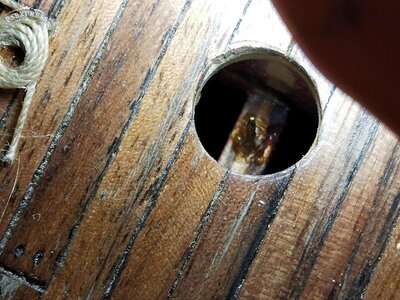
I didn't use any special alignment tools or jigs for the masts... basically just eyeballed them. Probably not the smartest or correct way to do it, but I gave myself a pass on this nasty bout of laziness.
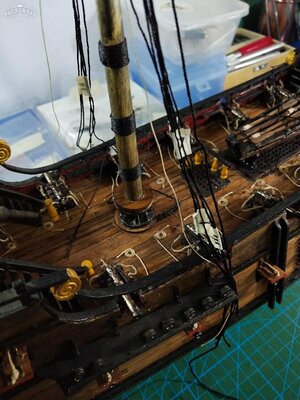
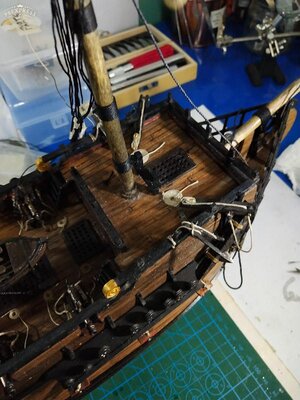
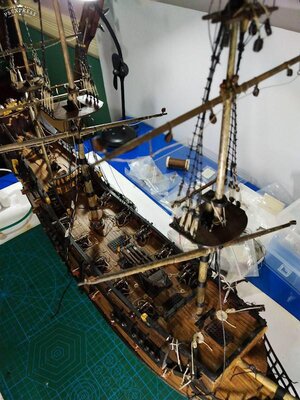
Next up I worked on the standing rigging. For the stays, I used black 0.8mm rope. I started from the bowsprit and worked myself aft.
Following the instructions, I attached a couple of deadeyes on the bowsprit for attaching the fore stay, fore topmast stay, fore topgallant stay and the main stay.
From the mast side, I looped the stay around the mast by forming an eye at the end of the rope. The other end of the rope went thru the eye to form a loop around the mast. I was supposed to make a mouse near the loop, like a stopper to keep the rope from tightening too much. There is a precise way of forming the mouse, but with the small scale, it will hardly be noticeable, so I just formed the stopper by tying a double knot and stiffening it with some CA glue.
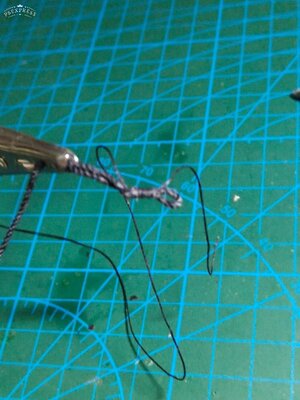
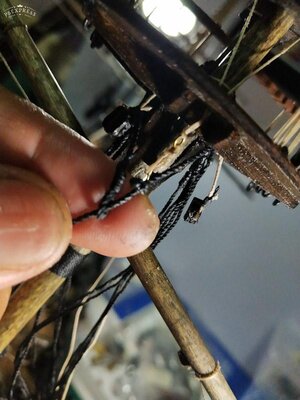
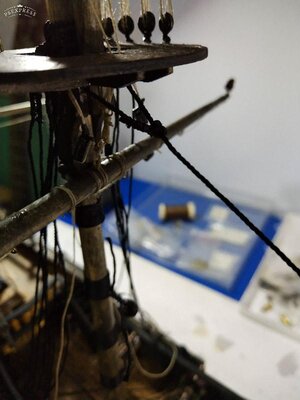
On the bowsprit:
I followed the instructions as below.
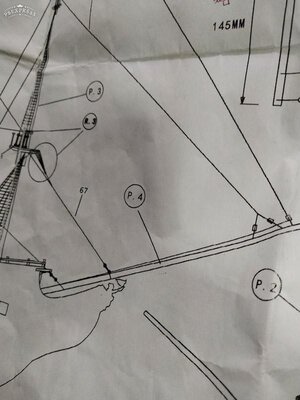
I attached the deadeyes as follows:
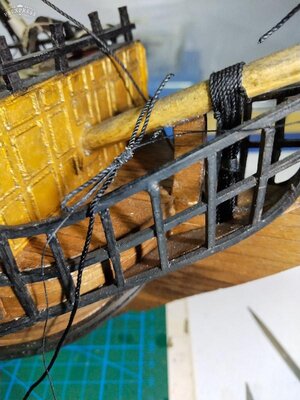
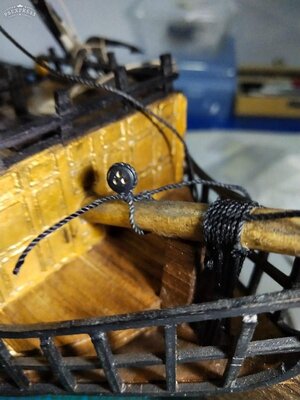
Then connected the stays to the deadeyes on the bowsprit. Notice that I left the ropes untrimmed for now, in case I need to adjust later for sag.
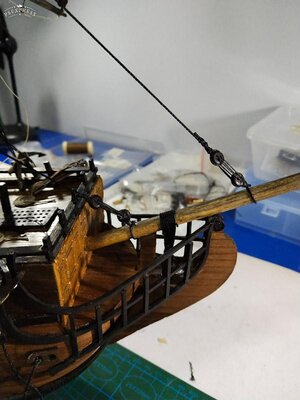
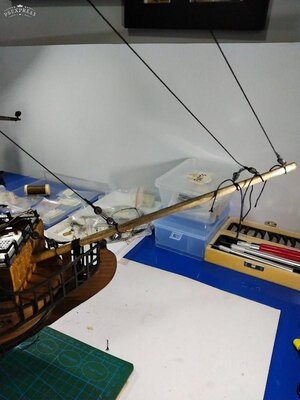
Next was the crows feet.
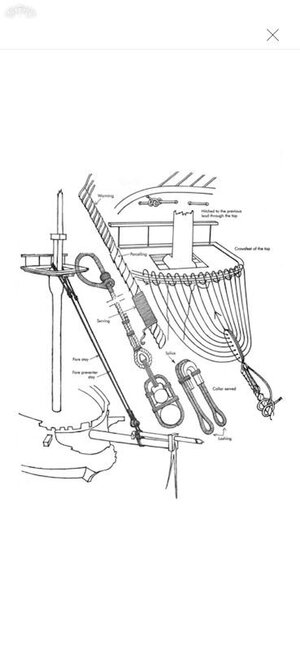
This comes off of the holes in front of the mast tops. The rope is theaded from a multi-holed piece called a euphroe. The euphroe is linked to a block which is connected to another block which is then tied to the stay.
I started by attaching a block to the stay.
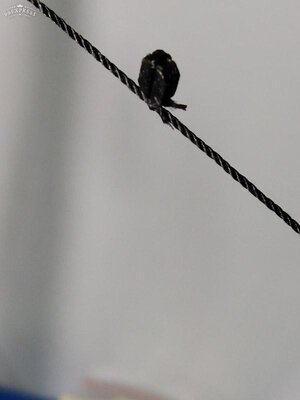
I then stropped the euphroe to another block. I left a small opening at the edge of the euphroe where I will attach the rope which will be where the threading starts.
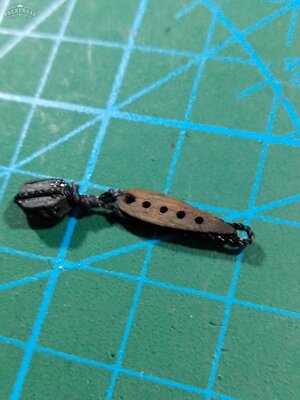
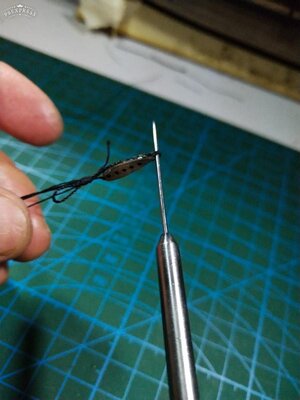
Then I start winding the rope through the holes in the prescribed sequence.
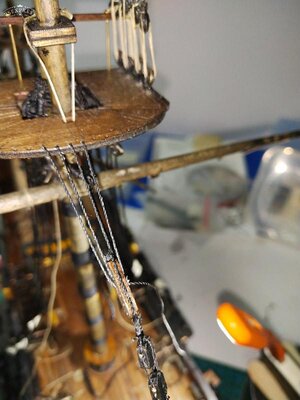
And here is the finished product. This process is repeated in the crows nest for the main mast.
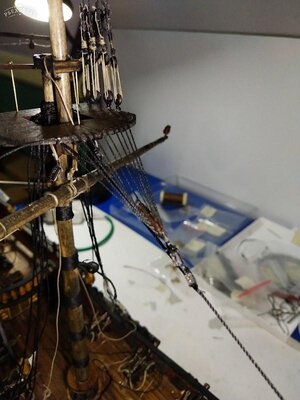
Disclaimer: I am not sure if this method is 100% correct. I tried to follow the drawings in the instructions but I don't know if I did it all correctly.
Next was the other stays on the main and mizzen masts. The mizzen stay is connected to the lower main mast using deadeyes.
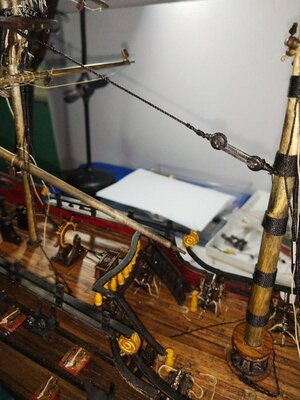
The mizzen back stay is attached to an eyebolt on the mizzen deck.
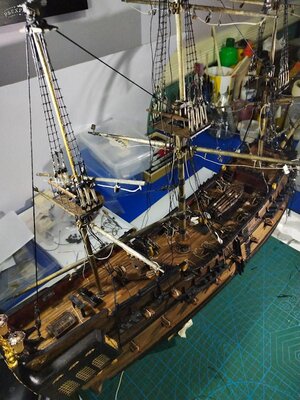
The main and fore back stays were rigged but are still loose for later rigging to the deadeyes on the channel.
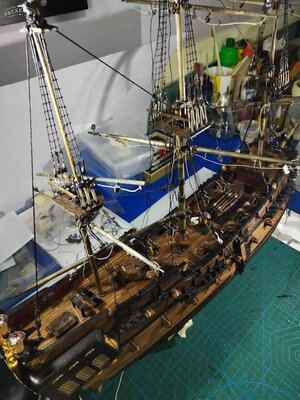
That's it for now. Thank you for dropping in. As always, comments, corrections and suggestions are always welcome.
Now, I am ready to step my masts. In order to gain a bit more strength to the masts, I drilled and glued some cutoff nails down into the bulkhead where the masts sit (this is necessary especially for the main mast because the base is only a few mm deep).

I didn't use any special alignment tools or jigs for the masts... basically just eyeballed them. Probably not the smartest or correct way to do it, but I gave myself a pass on this nasty bout of laziness.



Next up I worked on the standing rigging. For the stays, I used black 0.8mm rope. I started from the bowsprit and worked myself aft.
Following the instructions, I attached a couple of deadeyes on the bowsprit for attaching the fore stay, fore topmast stay, fore topgallant stay and the main stay.
From the mast side, I looped the stay around the mast by forming an eye at the end of the rope. The other end of the rope went thru the eye to form a loop around the mast. I was supposed to make a mouse near the loop, like a stopper to keep the rope from tightening too much. There is a precise way of forming the mouse, but with the small scale, it will hardly be noticeable, so I just formed the stopper by tying a double knot and stiffening it with some CA glue.



On the bowsprit:
I followed the instructions as below.

I attached the deadeyes as follows:


Then connected the stays to the deadeyes on the bowsprit. Notice that I left the ropes untrimmed for now, in case I need to adjust later for sag.


Next was the crows feet.

This comes off of the holes in front of the mast tops. The rope is theaded from a multi-holed piece called a euphroe. The euphroe is linked to a block which is connected to another block which is then tied to the stay.
I started by attaching a block to the stay.

I then stropped the euphroe to another block. I left a small opening at the edge of the euphroe where I will attach the rope which will be where the threading starts.


Then I start winding the rope through the holes in the prescribed sequence.

And here is the finished product. This process is repeated in the crows nest for the main mast.

Disclaimer: I am not sure if this method is 100% correct. I tried to follow the drawings in the instructions but I don't know if I did it all correctly.
Next was the other stays on the main and mizzen masts. The mizzen stay is connected to the lower main mast using deadeyes.

The mizzen back stay is attached to an eyebolt on the mizzen deck.

The main and fore back stays were rigged but are still loose for later rigging to the deadeyes on the channel.

That's it for now. Thank you for dropping in. As always, comments, corrections and suggestions are always welcome.




